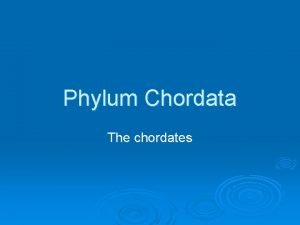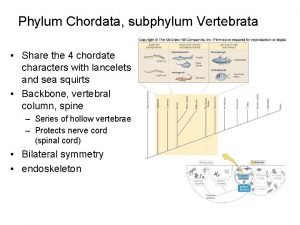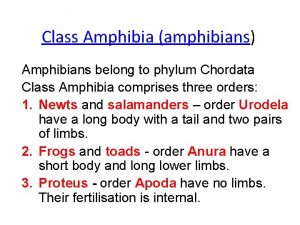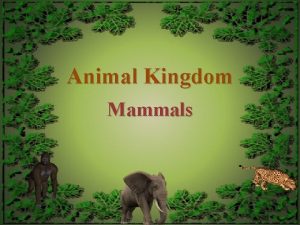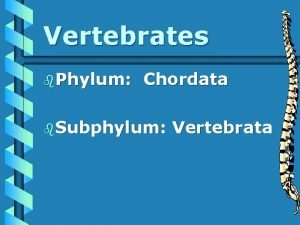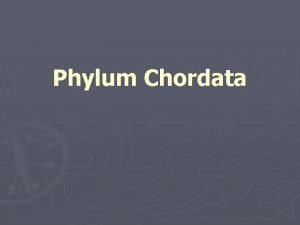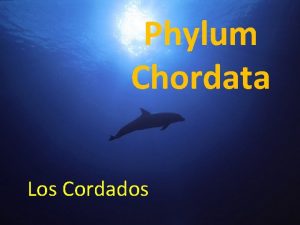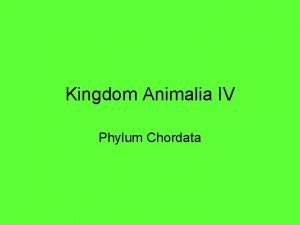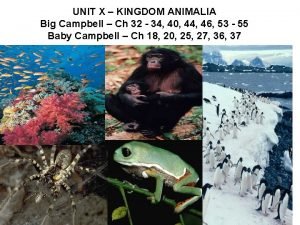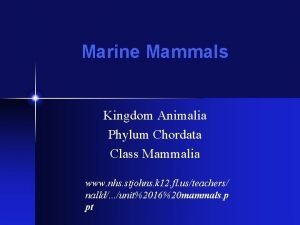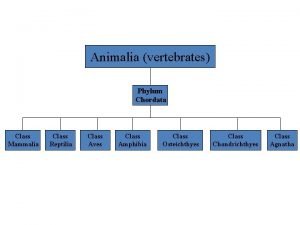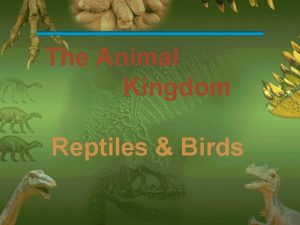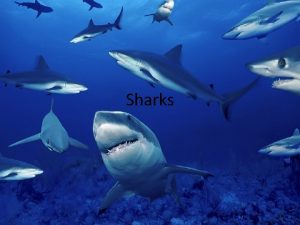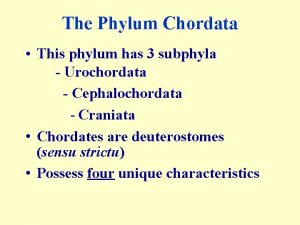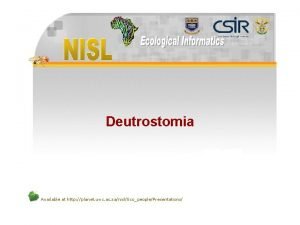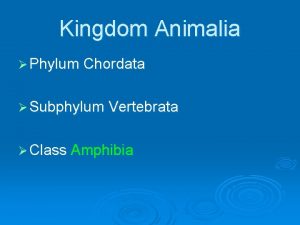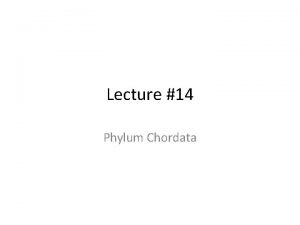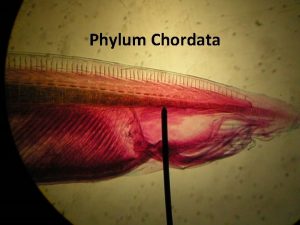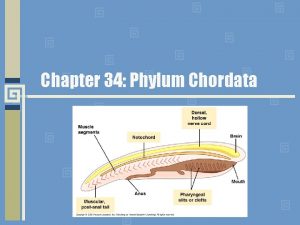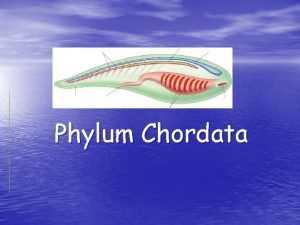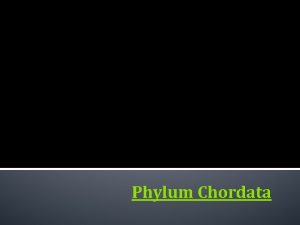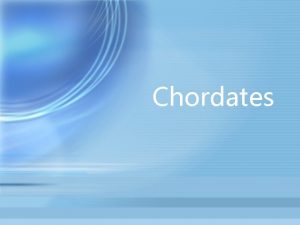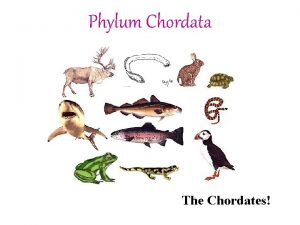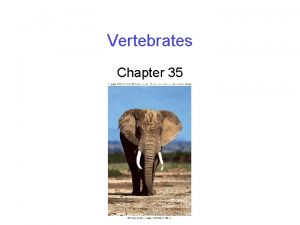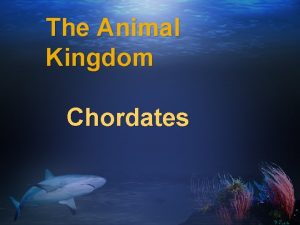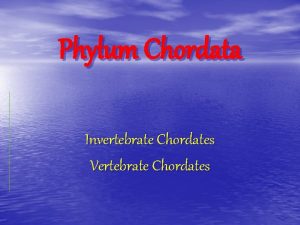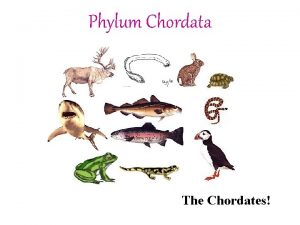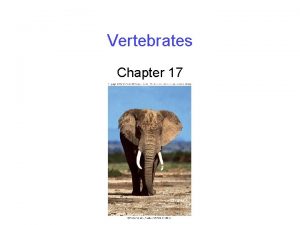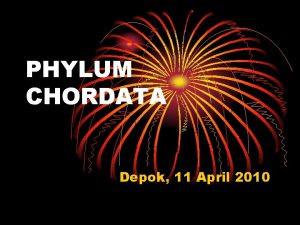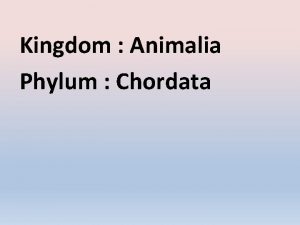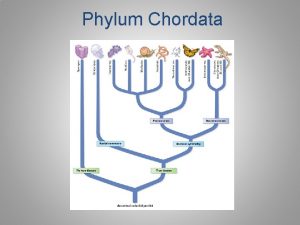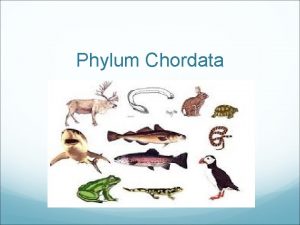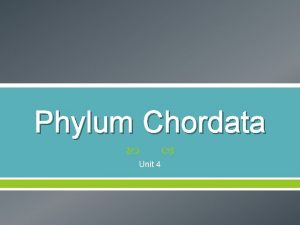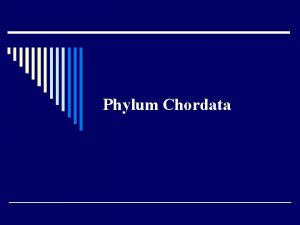The Chordates Phylum Chordata The Chordates at some



















- Slides: 19

The Chordates Phylum Chordata – The Chordates at some point in their life have a notochord, a nerve cord, and slits in their throat area.

The NOTOCHORD • Rod that supports the animal’s back – Some keep it all their lives, ex. lancelet – Others have a notochord as larva, but not as adults, ex. tunicate – Vertebrates have a notochord called a backbone

Other Characteristics of Chordates • Nerve chord (spinal cord) • Pharyngeal slits – these slits become part of the gills in fish, most other vertebrates lose these slits before birth

Vertebrate Characteristics • Most Chordates are vertebrates – Backbone is part of an endoskeleton • Protects the body, helps give it shape • Includes the vertebrae, skull, etc. – Backbone grows as the organism does – Supports the body against the downward pull of gravity

Separating Vertebrates • Ectotherm – body temperature changes as the environment changes – Ex. fish, reptiles, amphibians • Endotherm – animal that controls and regulates its body temperature by controlling the internal heat it produces. – Ex. mammals and birds • Require fur, feathers, or sweat glands

Vertebrates: A Review

Chordate Classes The Fish • Pgs. 374 -380

Fish Body Characteristics • Body Symmetry: Bilateral • Cell Organization: Cells to tissues to organ systems • Reproduction: Sexual • Body Development: – Internal Fertilization: eggs are fertilized inside the female’s body and when they are mature she gives birth to them. – External Fertilization: male releases sperm over the eggs the female releases. The eggs develop outside her body.

Classes of Fish – Jawless fish • Ex. Hagfish and lampreys – Cartilaginous fish • Sharks, rays, skates – Bony fish • Trout, tuna, goldfish, etc.

• Have no jaws and no scales Jawless • Cartilage skeleton • Have mouths containing structures for scraping, stabbing, and sucking their food • Hagfish and Lampreys are the only existing jawless fish today • Hagfish are scavengers and feed on the bodies of dead or dying fish • Lampreys are parasites and attach to fish and suck in tissue or blood Fish

Cartilaginous Fish • Have jaws, scales, and skeletons made of cartilage • Sharks rely on swimming to move water over their gills to get oxygen from the water. • Rays and skates take in water through holes behind their eyes while they are buried and release the water through their gills. • Carnivores

Bony Fish • Have jaws, scales, and gill pockets. • Skeletons are made of hard bone. • Bony fish have a swim bladder: internal gasfilled sac that helps the fish stay stable at different depths in the water. • Make up 95% of all fish species • Live in salt and fresh water

Chordate Classes The Reptiles • Pages 387 -394

Body Characteristics • Body symmetry: Bilateral • Cell organization: Cells to tissues to organ systems • Reproduction: Sexual • Body Development: Eggs with shells hold embryos that hatch into young which grow into adults

Orders of Reptiles • • • Lizards Snakes Turtles Alligators Crocodiles Dinosaurs (extinct)

Lizards and Snakes • Skin covered with overlapping scales that shed • Most lizards and ALL snakes are carnivores • Snake’s jaw can unhinge itself to eat its prey whole. • Some snakes have teeth with venom Snake eating a kangaroo

Alligators and Crocodiles • Carnivores that hunt at night • Alligators – broad snouts, few teeth visible • Crocodiles – pointed snouts, most of their teeth are visible • Only reptiles that care for their young


Turtles • Ribs and backbone attached to a protective shell (they can’t shed it). • No teeth; sharp beak • Carnivores or herbivores • Tortoises are land turtles
 Phylum chordata notochord
Phylum chordata notochord Subphylum
Subphylum Phylum chordata class amphibia
Phylum chordata class amphibia Animals in the phylum chordata
Animals in the phylum chordata Subphylum vertebrata characteristics
Subphylum vertebrata characteristics Characteristics of chordate
Characteristics of chordate Pez sanate
Pez sanate Aves taxonomy
Aves taxonomy Kingdom animalia phylum chordata
Kingdom animalia phylum chordata Body covering of animals
Body covering of animals Entertoxemia
Entertoxemia Kingdom animalia phylum chordata
Kingdom animalia phylum chordata Phylum chordata class reptilia
Phylum chordata class reptilia Animal kingdom phylum chordata
Animal kingdom phylum chordata What kingdom are sharks in
What kingdom are sharks in Petromyzontidae
Petromyzontidae Phylum chordata
Phylum chordata Phylum chordata class amphibia
Phylum chordata class amphibia What is phylum chordata
What is phylum chordata Chordata taxonomy
Chordata taxonomy
